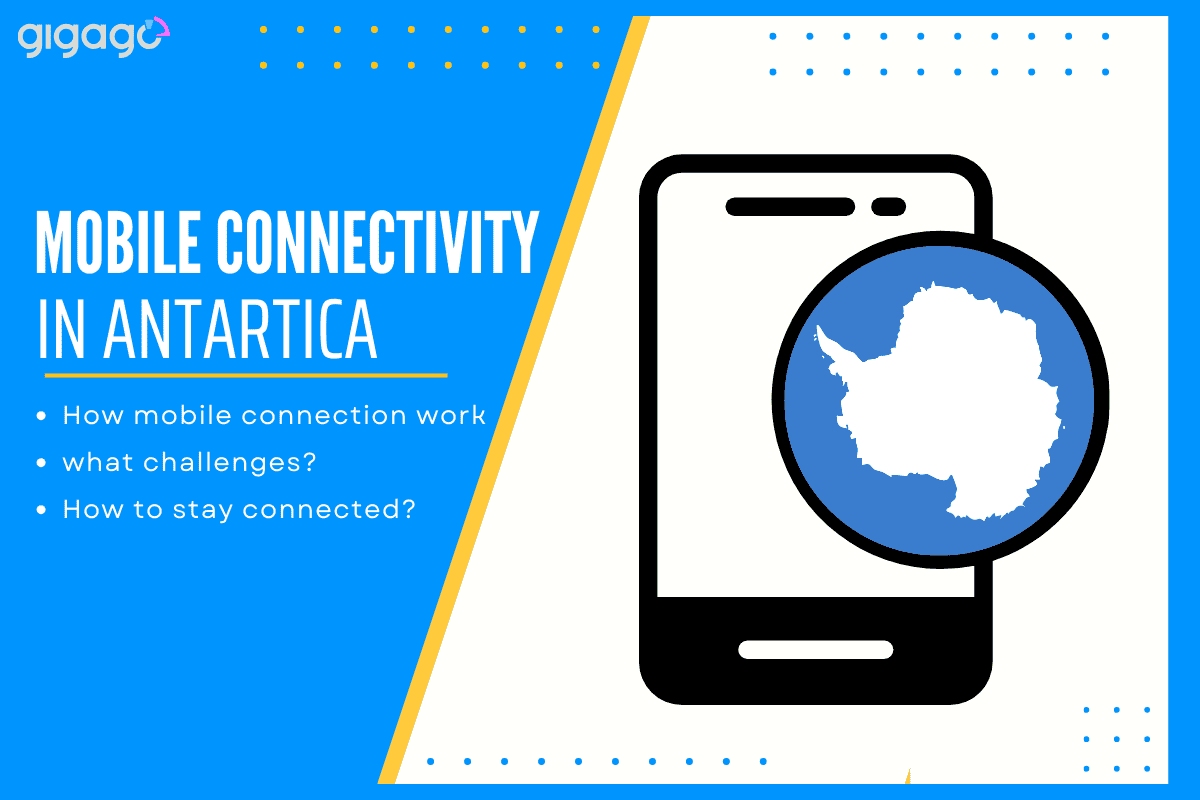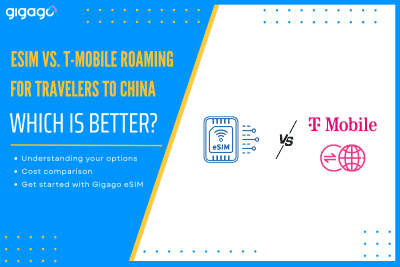When couples or friends travel together, it’s common to look for ways to save on mobile data. One question often comes up: “Can two travelers use the same eSIM?” The short answer is no – one eSIM cannot be used by two different travelers on two separate devices. However, there are practical alternatives that can […]
Mobile connectivity in Antartica
Mobile connectivity in Antarctica requires unique solutions due to the continent’s extreme conditions and isolation. Unlike other continents, Antarctica lacks standard cell towers and instead uses satellite systems for all communications. This specialized network supports vital research work and keeps teams connected in Earth’s most remote region.

In this article
I. How Does Mobile Connection Work in Antarctica?
Antarctica uses satellite networks for all communications. The continent has no regular mobile towers because only research teams work there, with no permanent residents.
Research stations connect to the world through satellite systems that provide internet and phone services. These connections are essential for scientists to share their work and maintain contact with others. The satellite network helps teams stay safe and connected while working in Antarctica’s extreme conditions.
II. What Are the Main Connectivity Challenges in Antarctica
Setting up mobile networks in Antarctica is extremely difficult. The continent faces unique problems that make regular communication systems impossible to build and maintain.
Extreme weather severely impacts communications in Antarctica. Temperatures below -80°F and strong winds can damage equipment, while the intense cold affects electronic devices and batteries.
The continent’s remote location makes equipment transport and repairs difficult and expensive.
With no basic infrastructure like roads or power supplies, building any communication system starts from zero.
Environmental protection is crucial. All communication equipment must follow strict rules to preserve Antarctica’s natural environment. These challenges make satellite communication the only practical option for staying connected on the continent.
III. What Types of Satellite Communication Are Used in Antarctica
Satellites provide essential connections across Antarctica since regular mobile networks cannot work there. Both private companies and government agencies run these satellite systems.
Key Benefits:
- Signals reach every part of Antarctica
- Works reliably in harsh conditions
- Adjusts to serve different team sizes
Limitations:
- Slow response times due to long-distance signals
- Limited internet speeds
- Expensive to maintain
These satellite networks remain the only practical way to stay connected in Antarctica’s extreme environment.
IV. How to Stay Connected in Antarctica
Scientists are developing better methods to communicate in Antarctica’s harsh environment. These improvements help research teams stay connected while protecting the continent’s unique environment.
New Satellite Technology. SpaceX’s Starlink and other low-orbit satellites bring faster internet with less delay to Antarctica. These satellites fly closer to Earth than older systems.
Portable Solutions. Special mobile stations can be quickly set up for research teams. These provide temporary networks where needed.
Local Networks. Research stations now build their own small internet systems with fiber cables and Wi-Fi. Though limited, these networks offer faster connections in specific areas.
Better Satellite Equipment. Scientists keep improving satellite technology for clearer signals and faster speeds, making communication in Antarctica more reliable.
V. Tips for Staying Connected in Antarctica
Before traveling to Antarctica, understand that internet access will be different from home – slower and sometimes unreliable. Here are essential tips for staying connected:
- Check available services. Each research station offers different communication options. Know what’s available at your destination before departure.
- Bring satellite phones. These phones work everywhere in Antarctica and are crucial for emergencies.
- Download everything first. Save important files, maps, and documents on your devices. The Internet may be too slow or unavailable when needed.
- Set realistic expectations. Internet speeds will be much slower than usual. Plan your communication needs accordingly.
VI. FAQs
Is there a mobile service in Antarctica?
Unlike most places, Antarctica has no regular cell phone networks. Instead, people must rely on satellite phones and satellite-based systems to communicate across this vast continent.
How do people access the internet in Antarctica?
Research stations and teams in Antarctica connect to the internet through satellite systems. While this connection is slower than what most people are used to, it keeps vital communication lines open for scientific work and safety.
What are the biggest challenges of mobile connectivity in Antarctica?
Connecting in Antarctica faces three major obstacles: extreme cold and storms that affect equipment, great distance from normal networks, and limited building options due to environmental protection rules.



